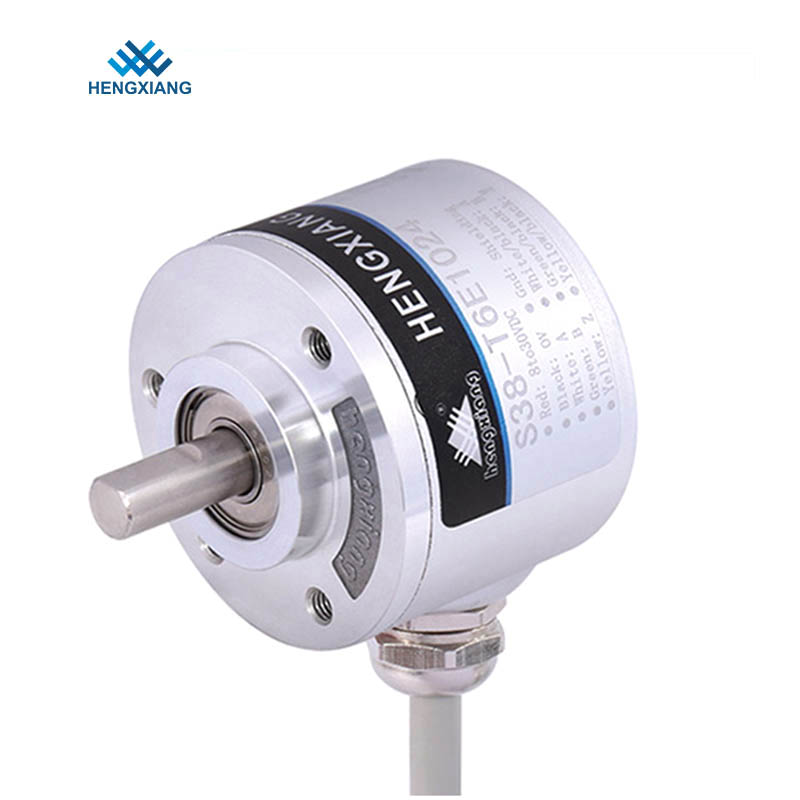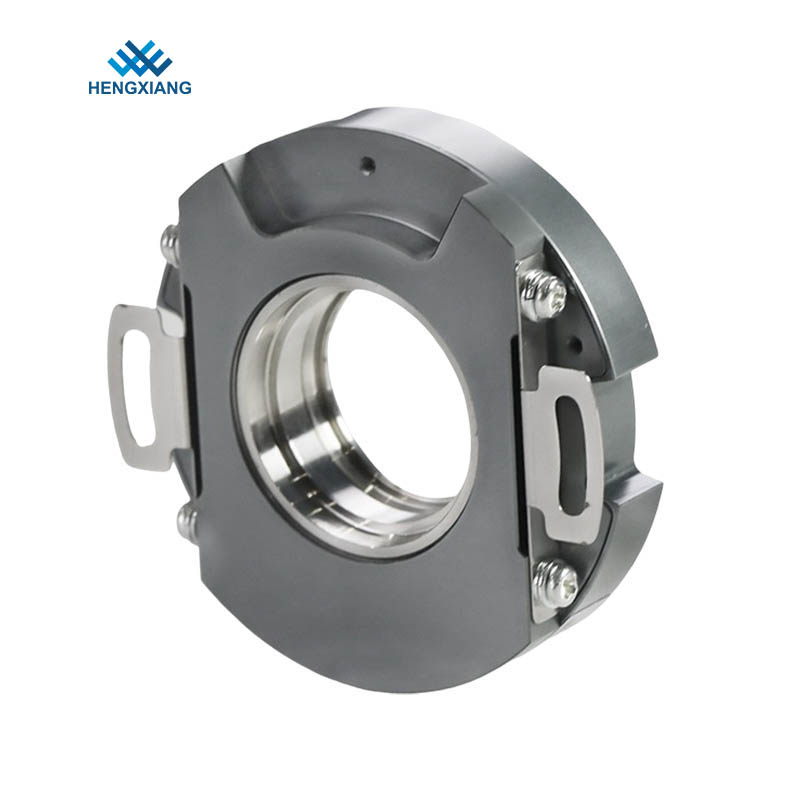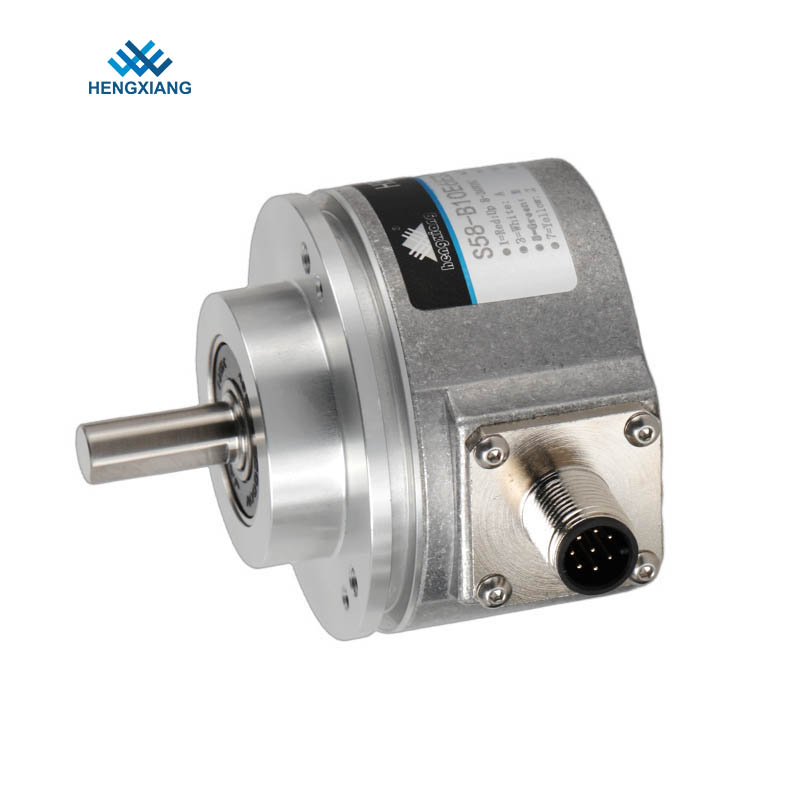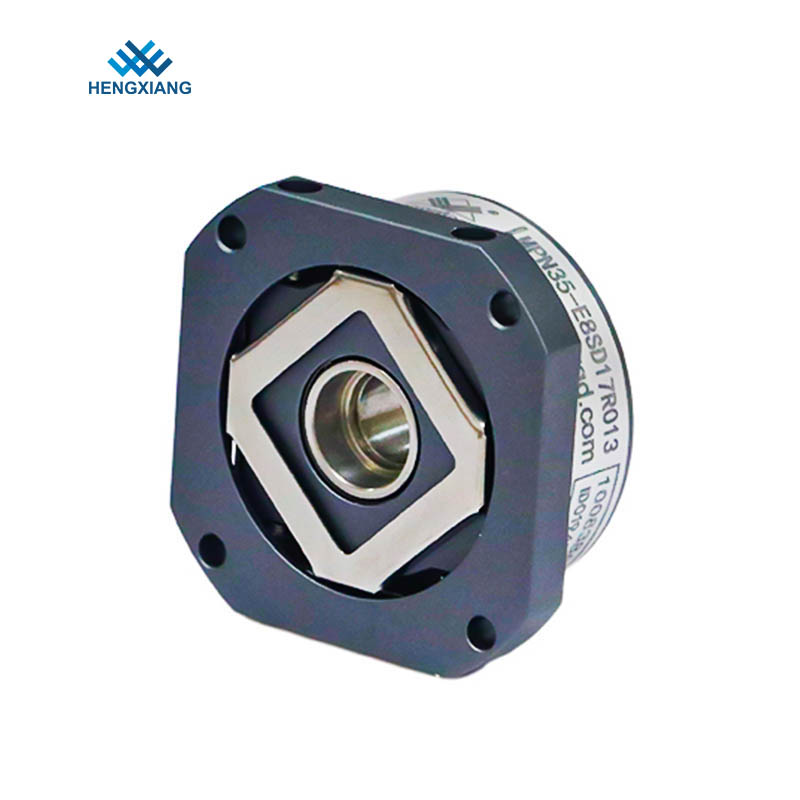Are single-turn solid encoders immune to electromagnetic interference?
Release Time : 2025-10-11
In modern industrial automation systems, encoders serve as core components for position and velocity feedback. The accuracy of their signals is directly related to the stability and precision of the entire control system. This is particularly true in servo drives, CNC machine tools, robotic joints, or precision assembly lines. Any slight signal interference can cause positioning deviation, motion jitter, or even equipment malfunction. Single-turn solid encoders are widely used in applications requiring high reliability due to their compact size, fast response, and lack of mechanical wear. However, these devices often operate in environments densely populated with strong electromagnetic sources, such as motors, inverters, and high-current cables, where electromagnetic interference is ubiquitous. Therefore, the ability of single-turn solid encoders to resist electromagnetic interference is a key indicator of their ability to operate stably in complex industrial environments.
Electromagnetic interference primarily originates from high-frequency switching, sudden current fluctuations, and spatial radiation. It can intrude into the encoder's signal lines through conduction or radiation, causing output pulse distortion, data jumps, or communication interruptions. For incremental encoders, interference can cause counting errors and cumulative position deviations. For absolute encoders, interference can lead to misinterpretation of position data, causing the control system to misjudge the current state. Single-turn solid encoders typically use semiconductor sensing technology instead of traditional mechanical contacts. With no internal physical contact components, this contactless design inherently offers a certain level of interference resistance. Since signal generation doesn't rely on sliding brushes or mechanical gears, it avoids noise sources introduced by poor contact or spark discharges, fundamentally improving signal purity.
Achieving interference resistance relies not only on the sensing principle but also on the overall circuit design and structural protection. High-quality single-turn solid encoders integrate filtering, shaping, and differential drive technologies into their signal processing circuitry, effectively suppressing the intrusion of high-frequency noise. The input power supply typically features voltage regulation and decoupling circuitry to prevent external voltage fluctuations from affecting internal logic operations. The output interface utilizes differential signals or shielded Gray code parallel outputs, leveraging signal symmetry to offset common-mode interference and ensure clear and stable transmission over long distances. The metal casing is well-grounded, creating a Faraday cage effect to block external electromagnetic field interference. Furthermore, the cable utilizes a double-shielded structure, with the inner layer shielding the signal line and the outer layer connected to the device ground, further blocking interference paths.
In practical applications, encoders often share the same electrical control cabinet with high-power devices such as frequency converters and servo drives. These devices generate strong electromagnetic pulses during switching. If the encoder's anti-interference capabilities are insufficient, its feedback signal may be drowned out by the noise. Single-turn solid encoders, with their high noise immunity, maintain output consistency in this harsh electromagnetic environment, ensuring that the position information received by the controller is accurate and reliable. For example, in a high-speed stamping machine, the encoder provides real-time feedback on the slide position. If the signal is affected by interference and jumps, it can cause the mold to close incorrectly, resulting in a serious accident. Only encoders with strong anti-interference capabilities can fulfill this critical role.
In addition, the encoder's installation method also affects its anti-interference performance. Proper wiring strategies, such as separating signal and power lines, avoiding excessive parallel runs, and using metal cable ducts for shielding, can help maximize encoder performance. Encoders with reverse polarity protection, overvoltage protection, and short-circuit protection can protect the internal circuitry from wiring errors or external anomalies, preventing signal anomalies caused by external faults.
From a system integration perspective, electromagnetic interference resistance is not just an individual encoder performance feature; it serves as a safety barrier for the entire automation system. It ensures an unimpeded data link from sensor to controller, enabling high-precision control. This capability is particularly crucial in scenarios such as smart manufacturing and unmanned production lines, where stability is paramount.
In summary, single-turn solid encoders, through their contactless sensing technology, optimized circuit design, shielding structure, and multiple protective measures, demonstrate strong electromagnetic interference resistance. They serve not only as a position measurement tool but also as a "messenger" in industrial communication links, delivering accurate and reliable information in noisy electromagnetic environments. Choosing an encoder with this characteristic infuses stability and trust into the automation system, ensuring that every movement is based on real data.
Electromagnetic interference primarily originates from high-frequency switching, sudden current fluctuations, and spatial radiation. It can intrude into the encoder's signal lines through conduction or radiation, causing output pulse distortion, data jumps, or communication interruptions. For incremental encoders, interference can cause counting errors and cumulative position deviations. For absolute encoders, interference can lead to misinterpretation of position data, causing the control system to misjudge the current state. Single-turn solid encoders typically use semiconductor sensing technology instead of traditional mechanical contacts. With no internal physical contact components, this contactless design inherently offers a certain level of interference resistance. Since signal generation doesn't rely on sliding brushes or mechanical gears, it avoids noise sources introduced by poor contact or spark discharges, fundamentally improving signal purity.
Achieving interference resistance relies not only on the sensing principle but also on the overall circuit design and structural protection. High-quality single-turn solid encoders integrate filtering, shaping, and differential drive technologies into their signal processing circuitry, effectively suppressing the intrusion of high-frequency noise. The input power supply typically features voltage regulation and decoupling circuitry to prevent external voltage fluctuations from affecting internal logic operations. The output interface utilizes differential signals or shielded Gray code parallel outputs, leveraging signal symmetry to offset common-mode interference and ensure clear and stable transmission over long distances. The metal casing is well-grounded, creating a Faraday cage effect to block external electromagnetic field interference. Furthermore, the cable utilizes a double-shielded structure, with the inner layer shielding the signal line and the outer layer connected to the device ground, further blocking interference paths.
In practical applications, encoders often share the same electrical control cabinet with high-power devices such as frequency converters and servo drives. These devices generate strong electromagnetic pulses during switching. If the encoder's anti-interference capabilities are insufficient, its feedback signal may be drowned out by the noise. Single-turn solid encoders, with their high noise immunity, maintain output consistency in this harsh electromagnetic environment, ensuring that the position information received by the controller is accurate and reliable. For example, in a high-speed stamping machine, the encoder provides real-time feedback on the slide position. If the signal is affected by interference and jumps, it can cause the mold to close incorrectly, resulting in a serious accident. Only encoders with strong anti-interference capabilities can fulfill this critical role.
In addition, the encoder's installation method also affects its anti-interference performance. Proper wiring strategies, such as separating signal and power lines, avoiding excessive parallel runs, and using metal cable ducts for shielding, can help maximize encoder performance. Encoders with reverse polarity protection, overvoltage protection, and short-circuit protection can protect the internal circuitry from wiring errors or external anomalies, preventing signal anomalies caused by external faults.
From a system integration perspective, electromagnetic interference resistance is not just an individual encoder performance feature; it serves as a safety barrier for the entire automation system. It ensures an unimpeded data link from sensor to controller, enabling high-precision control. This capability is particularly crucial in scenarios such as smart manufacturing and unmanned production lines, where stability is paramount.
In summary, single-turn solid encoders, through their contactless sensing technology, optimized circuit design, shielding structure, and multiple protective measures, demonstrate strong electromagnetic interference resistance. They serve not only as a position measurement tool but also as a "messenger" in industrial communication links, delivering accurate and reliable information in noisy electromagnetic environments. Choosing an encoder with this characteristic infuses stability and trust into the automation system, ensuring that every movement is based on real data.







